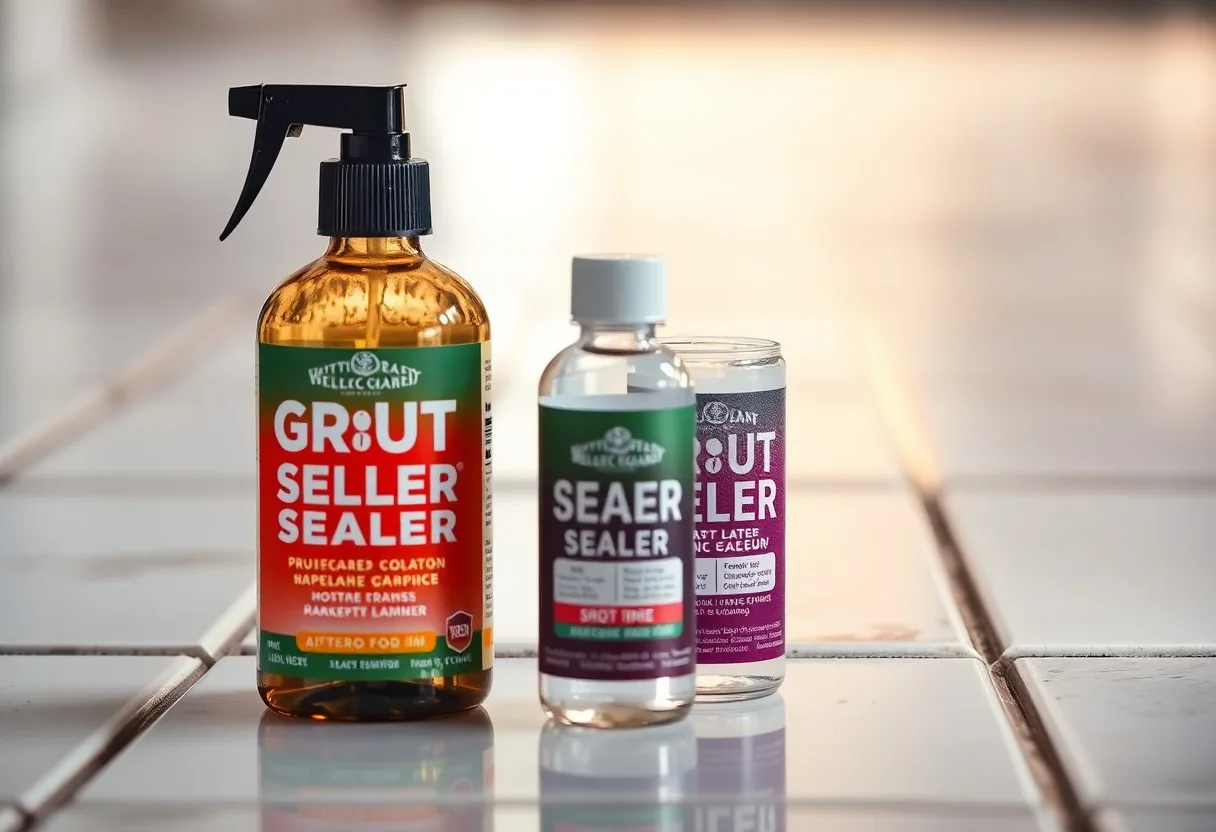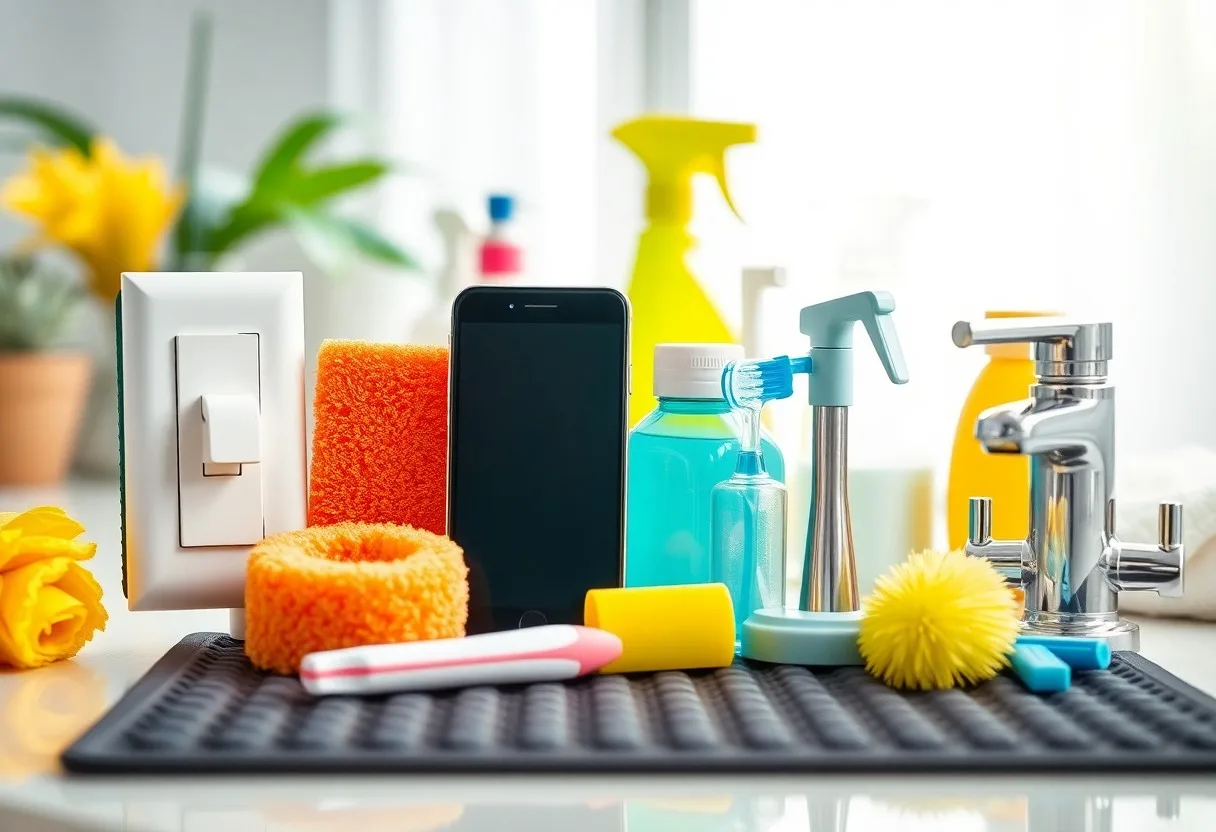Maintaining your tile and grout. It’s important to know how often you should clean and maintain your tile and grout to prolong their life and ensure a hygienic environment in your home. Neglecting dirty grouts can lead to mold growth and bacterial infestations, posing health risks to you and your family. Regular cleaning not only enhances the aesthetic appeal of your floors but also prevents costly repairs down the line. With the right approach, you can keep your tiles looking fresh and ensure that your living spaces remain safe and inviting.
Key Takeaways:
- Regular cleaning of tile and grout should be done weekly to prevent dirt buildup and maintain a fresh appearance.
- Deep cleaning and resealing of grout lines are recommended every 6 to 12 months, depending on usage and location.
- Utilizing proper cleaning products and techniques can significantly extend the life of your tile and grout.
1. Clean tiles weekly for optimal appearance and hygiene. 2. Clean the grout every one to three months. 3. Use pH-neutral cleaners to avoid damage. 4. Seal grout annually to prevent staining and moisture. 5. Address spills immediately to maintain cleanliness. 6. Regular sweeping prevents dirt buildup on tile surfaces.
Importance of Tile and Grout Maintenance
While regular maintenance of your tile and grout might seem like a tedious task, it plays a vital role in preserving the overall integrity and durability of your flooring. Neglecting this aspect can lead to not only unsightly stains and discoloration but also damage that may require expensive repairs. Keeping your tiles and grout clean can significantly enhance their lifespan and reduce the need for frequent replacements.
Health and Hygiene Benefits
Dirt, bacteria, and allergens can accumulate between the cracks and crevices of your grout line, posing health risks for you and your family. Regular cleaning helps eliminate these harmful substances, contributing to a healthier living environment and reducing the chances of respiratory issues or allergic reactions.
Aesthetic Considerations
After consistent cleaning and maintenance, your tile and grout will maintain their original beauty and shine, enhancing the overall appearance of your home. Dull or stained tiles can detract from the aesthetic appeal of your space, making it feel unwelcoming and less polished.
In addition, a well-maintained floor creates a positive impression on guests and can even increase the value of your property. Clean and vibrant tiles can elevate your home’s ambiance, while neglected flooring can lead to an outdated or neglected look. By investing time in tile and grout maintenance, you ensure that your home remains inviting and visually appealing, showcasing your attention to detail and care for your living space.
Maintaining Your Tile And Grout / Frequency of Cleaning
Some homeowners may underestimate the importance of regular cleaning. You should aim to clean your tile and grout every few weeks, especially in high-traffic areas. For expert advice, check out this How to clean grout on tile, according to experts that provides detailed methods optimal for maintaining your surfaces.
Daily Care Tips
Along with regular cleaning, implementing daily care tips can help keep your tile and grout in top shape. Consider the following:
- Wipe spills immediately.
- Use a doormat at entryways.
- Vacuum or sweep regularly to remove debris.
Knowing these simple steps can significantly enhance the longevity of your tile and grout.
Weekly and Monthly Cleaning Routines
Below, you should focus on establishing a regular cleaning routine that incorporates deeper cleaning techniques. This includes mopping with a gentle cleanser weekly and a thorough scrub of your grout lines monthly. Maintaining this schedule helps prevent build-up and discoloration that can occur over time.
In fact, dedicating some time to these tasks can prevent costly replacements down the line. For optimal results, use a steam cleaner, which not only removes dirt but also kills bacteria. Consistency in your cleaning habits will maintain the beauty and hygiene of your tile and grout, ensuring a long-lasting appeal in your home.
Deep Cleaning Techniques
Despite regular maintenance, your tile and grout may still accumulate dirt and grime over time. To effectively restore their shine, you may need to utilize deep cleaning techniques. For guidance on How often should I clean grout? : r/Tile, exploring expert tips can help you tailor your cleaning routine.
Tools and Supplies Needed
Tools you will need for effective deep cleaning include a stiff-bristled brush, a mop, a bucket, and a vacuum or broom to remove debris. Additionally, ensure you have a quality tile and grout cleaner, or make your own using household items like baking soda and vinegar.
Step-by-Step Deep Cleaning Process
Across a few simple steps, you can effectively clean your tile and grout:
| 1. Clear the Area | Remove furniture and any items from the flooring. |
| 2. Sweep/Vacuum | Eliminate loose dirt and dust from the surface. |
| 3. Apply Cleaner | Use your chosen cleaner directly on the grout lines. |
| 4. Scrub | Use a stiff-bristled brush to scrub the grout and tiles. |
| 5. Rinse | Thoroughly rinse the area with clean water. |
| 6. Dry | Wipe down with a mop or towels to dry the surface. |
Supplies that will enhance your deep cleaning process include appropriate cleaners and tools. Your stiff-bristled brush is important for scrubbing, while hot water helps activate the cleaning agents in your cleaner. Be cautious with commercial cleaners as some can be harmful if inhaled or touched; always read the label and use gloves. Keeping your area properly ventilated will also enhance safety. Following this process diligently will restore the charm of your tiles and grout.
Grout Sealing
Not sealing your grout can lead to unwanted stains and mildew buildup, compromising the overall appearance and hygiene of your tile surfaces. Grout is a barrier between tiles, absorbing moisture and dirt over time. Regular sealing safeguards your grout from wear and keeps your tiles looking fresh and vibrant.
Benefits of Sealing Grout
Besides protecting against water damage and staining, sealing your grout enhances its longevity and makes cleaning easier. A sealed surface reduces the likelihood of mold and mildew growth, keeping your bathroom and kitchen cleaner and healthier. Additionally, it can save you time and money on future repairs or replacements.
Recommended Sealing Frequency
The general recommendation is to seal your grout every 6 to 12 months, depending on usage and environmental factors. Frequent exposure to water or high-traffic areas may require more regular sealing to maintain protection.
But if you notice any signs of discoloration or water absorption, you should consider sealing your grout more often. Regular inspections will help you identify when your grout needs attention. Ignoring this can lead to serious issues, including frequent mold problems and expensive repairs. Take the time to invest in sealing, as it can greatly extend the life and aesthetics of your tiled surfaces.
Common Mistakes to Avoid
Your tile and grout may suffer from improper cleaning habits that can lead to damage over time. Awareness of these common mistakes will help you maintain the integrity and appearance of your surfaces, ensuring they last longer and look their best. Avoid these pitfalls for a more effective cleaning routine.
Incorrect Cleaning Products
Using the wrong cleaning products can lead to irreversible damage to your tile and grout. Certain acidic or harsh chemicals can degrade the grout’s structure and the tile’s finish. Instead, opt for pH-balanced cleaners specifically formulated for your flooring type.
Overlooking Grout Lines
Cleaning only the tile surface and neglecting grout lines can result in a dull and dirty appearance. The grout absorbs stains and dirt over time, making it vital to include these areas in your cleaning routine. Regularly scrub the grout with a suitable brush and cleaner to keep it looking pristine. Effective grout maintenance not only enhances the visual appeal of your tiles but also prolongs their lifespan by preventing permanent staining or damage. Don’t let unnoticed grime affect the overall look of your tiled areas; give that grout the attention it deserves!
Professional Cleaning Services
Unlike typical DIY techniques, professional cleaning services utilize specialized equipment and cleaning solutions to ensure your tile and grout receive thorough attention. By hiring experts, you can achieve deeper cleaning and restoration that is difficult to replicate at home, extending the lifespan of your flooring and enhancing its appearance.
When to Consider Hiring a Professional
Cleaning tile and grout can be overwhelming, especially if you notice persistent stains or grime that DIY methods can’t tackle. You should consider hiring a professional when:
| Signs You Need a Pro | Reasons to Hire |
|---|---|
| Deep stains or discoloration | Specialized cleaning methods |
| Health concerns (allergies, mold) | Improved indoor air quality |
| Large areas to clean | Time-saving and efficient |
Cost and Value Comparison
Consider how much you spend versus the value you receive with professional services. Here’s a breakdown:
| Expense | Value |
|---|---|
| DIY Supplies | May require multiple attempts |
| Professional Cleaning | Guaranteed results that last |
However, weighing costs against value shows that while DIY cleaning appears cheaper initially, professional cleaning offers long-lasting effectiveness and time savings that DIY cannot match. While you might invest more upfront, the benefits, such as health improvements and the enhanced aesthetic appeal of your tiles, justify the expense. Investing in professional cleaning can ultimately save you time and effort and the potential for costly damage from improper cleaning methods.
To wrap up
To wrap up, you should aim to clean your tile and grout at least once a month to prevent dirt buildup and staining. For high-traffic areas or after heavy use, consider increasing the frequency to weekly. Regular maintenance, such as sealing grout every 6 to 12 months, will also help protect your surfaces and keep them looking fresh. By establishing a consistent cleaning schedule, you can prolong the life of your tiles and maintain the beauty of your home.
FAQ
Q: How often should I clean my tile and grout?
A: The frequency of cleaning your tile and grout largely depends on the area’s usage and exposure to moisture. For high-traffic areas, such as kitchens and bathrooms, it is advisable to perform a thorough cleaning at least once a month. In less frequently used spaces, like guest bathrooms or storage areas, every three to six months should suffice. Regular cleaning not only keeps your tiles looking new but also helps to prevent stubborn stains and buildup.
Q: What are the best methods for maintaining tile and grout?
A: To maintain tile and grout effectively, start with regular sweeping or vacuuming to remove dirt and debris. For deeper cleaning, a mixture of warm water and pH-balanced cleaner is ideal. It’s important to avoid harsh chemicals that can damage the grout. Using a soft brush or cloth can help scrub away stains without scratching the surfaces. Additionally, sealing your grout every 6 to 12 months can offer extra protection against moisture and staining.
Q: How can I tell if my grout needs to be cleaned or resealed?
A: If you notice that your grout has become discolored or has developed stains, it’s time to clean it. Another indicator is if water starts to be absorbed into the grout instead of beading on the surface, suggesting it may be time to reseal. Regularly inspecting the grouted areas and conducting a simple water test can help you determine if resealing is necessary. Freshly sealed grout will resist staining and be easier to maintain over time.




